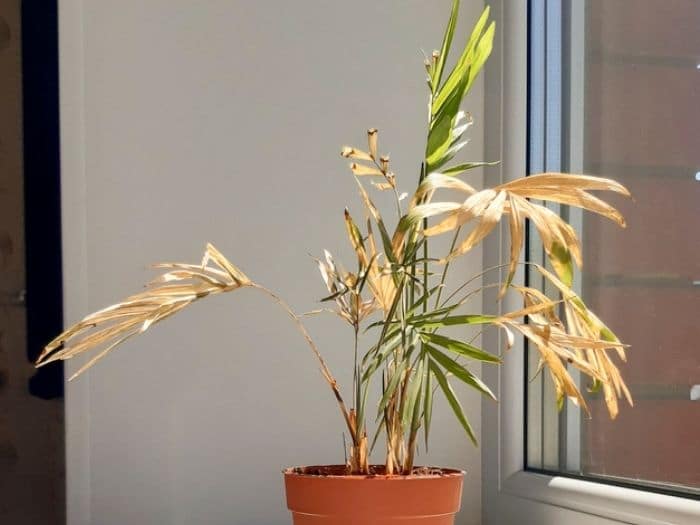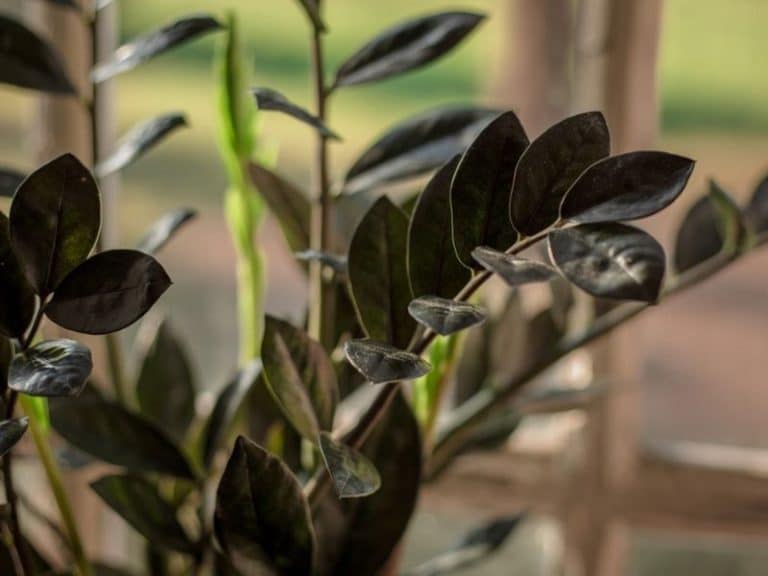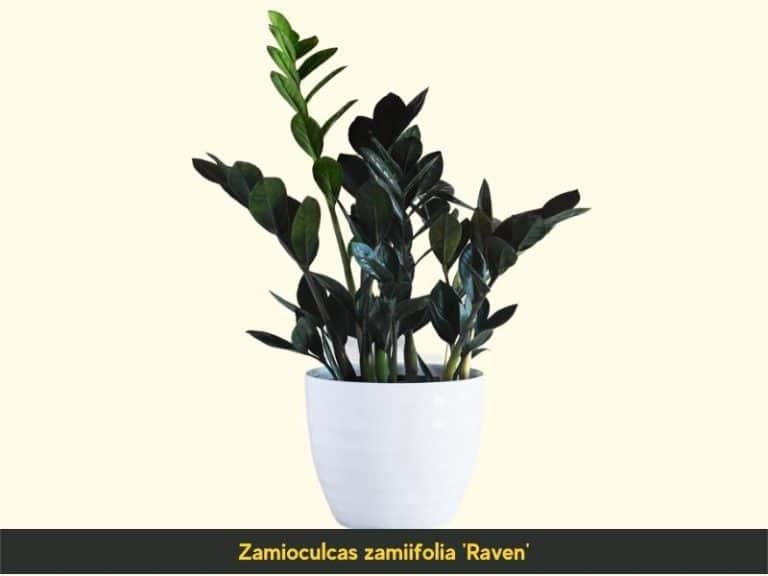14 Fastest Growing Houseplants for Lush Indoors
If you’d like to develop your interior with green plants but don’t have the time to wait for them to grow, you want to look at houseplants with a quick growth rate.
Having been a plant care expert and a nursery attendant for a few years, I’ve recommended below some plants that will grow fast.
The fastest-growing houseplants include peace lilies, marigolds, garden cress, and philodendrons. These plants germinate or sprout within 10 days in optimal growing conditions. You can make them grow even faster by watering them with club soda and applying old coffee grounds or quick-release fertilizers.
Top 15 fastest-growing houseplants
Here are houseplants that grow fast:
1. Spider plant (Chlorophytum comosum)

Spider plants are fast-growing, low-maintenance houseplants that take just 2-3 weeks to root. With proper care, the plant develops a rosette of leaves about 15 inches in height and width within just 6-12 months.
Spider plants are great for purifying the air in indoor spaces, as they take in carbon dioxide, xylene, and formaldehyde from the atmosphere.
I like the plant because it adds aesthetic allure to indoor spaces with its vibrant white and green leaves. They are also very low-maintenance, with minimal water and light requirements.
Learn more about the benefits of spider plants.
2. Ficus tree (Ficus benjamina)
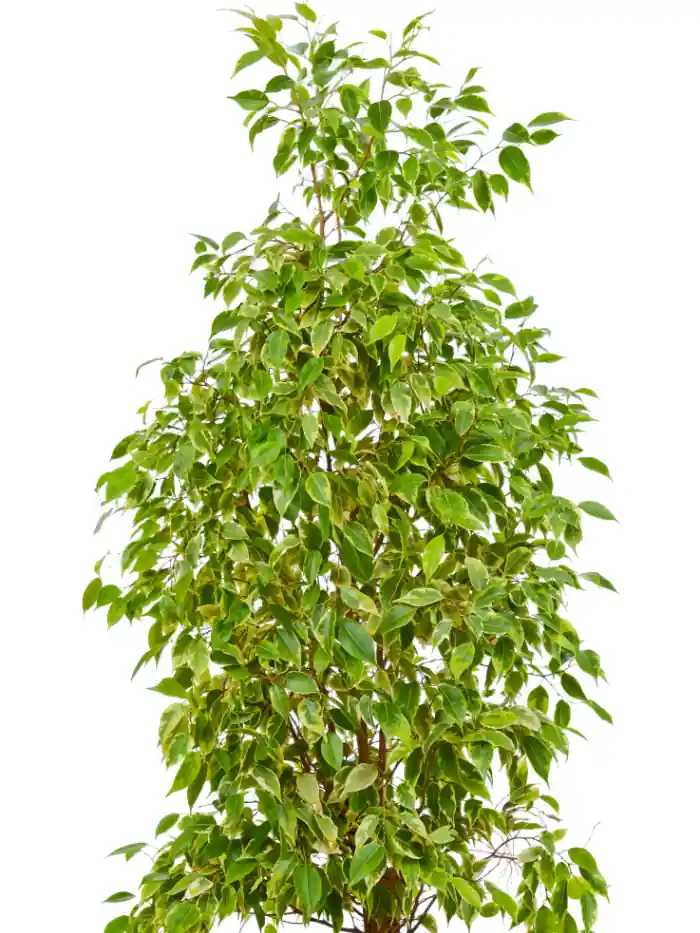
Ficus trees can gain between 3 and 6 feet in height within one year. If your indoor space is limited, I recommend you learn how to prune ficus trees because you’ll need to cut them back every few years.
Ficus trees will only grow fast under moderate humidity and partial to indirect sunlight. If your region is low on humidity, I recommend using a plant humidifier to keep the plant healthy and speed up its growth.
3. Snake Plant (Sansevieria trifasciata)

Snake plants sprout within four-six weeks of being potted and can grow at a fast rate of about 3 to 6 feet per year.
The snake plant’s leaves grow vertically and boast multicolored edges that add a vivid touch to interior spaces. This plant can go for several days without water and still maintain its thriving appearance, making it great for those who prefer low-maintenance houseplants.
Learn more about snake plant care.
4. Dumb cane (Dieffenbachia Amoena)
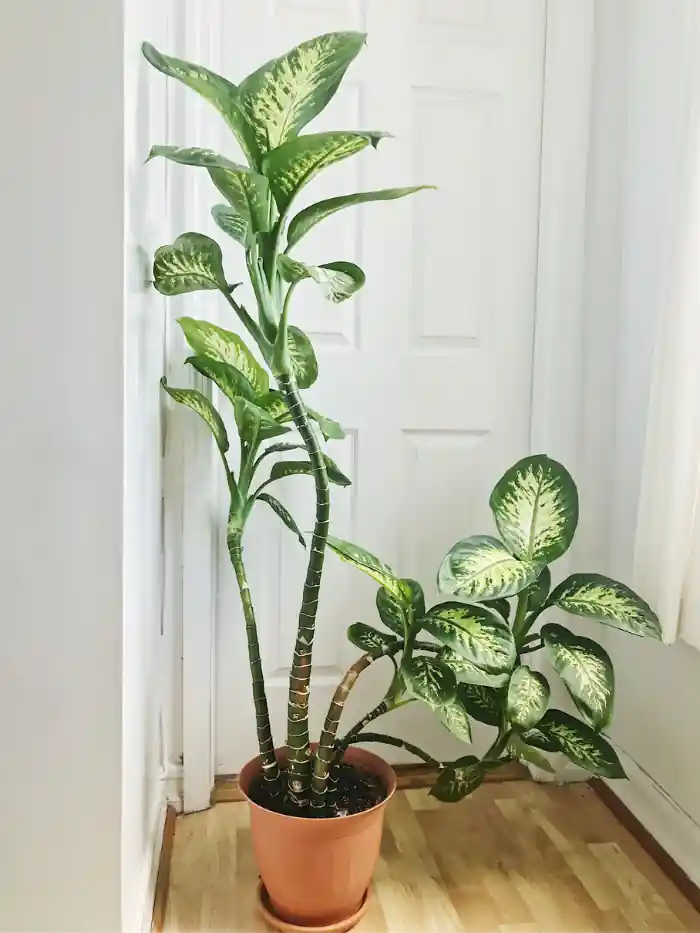
Dumb cane grows at a fairly fast rate. When propagated from cuttings, the dumb cane plant will have new growth within 1-2 months and grow at a rate of up to 2 feet in one year.
I always recommend the dumb cane for people looking for indoor plants with large foliage. It can grow tall to a height of 6 feet if left unpruned.
This makes it a great indoor ornamental plant if you have lots of dull-looking, open indoor spaces that you want to fill up.
Caution: Dumb cane is highly toxic to pets like cats and dogs and should therefore be kept out of their reach. Keep it out of children’s reach as well, as the leaves temporarily cause a numbing feeling within the vocal cords, hence the name ‘dumb cane.’
5. Hibiscus (Hibiscus sp.)
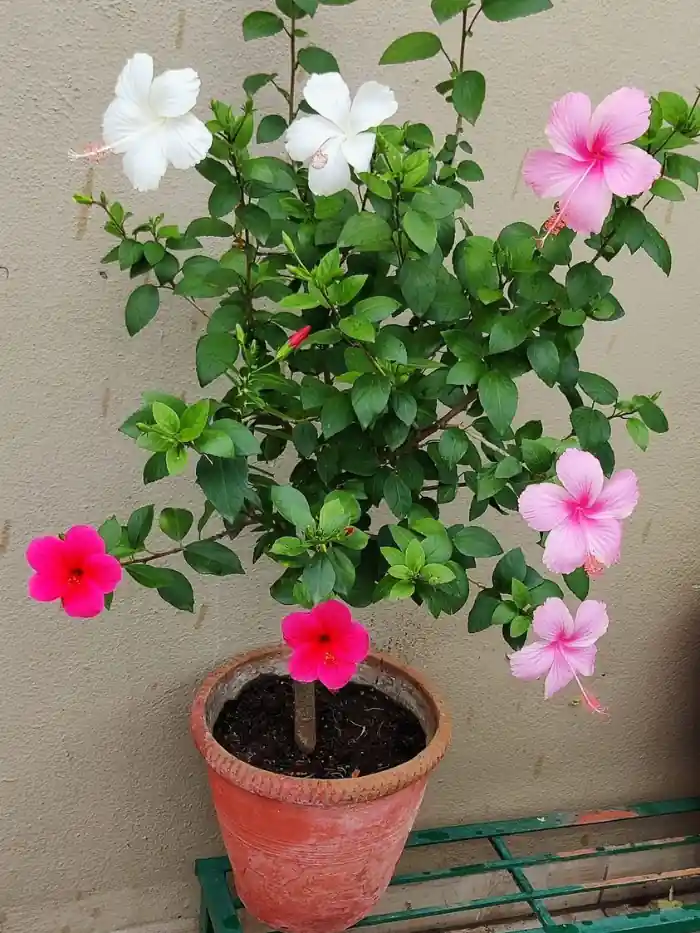
Hibiscus germinates within seven days and sprouts within 30 days under the right growing conditions.
The plant will grow to a height of 7 to 12 feet within 2-3 years of planting, which is why it is recommended if you want to establish an interiorscape fast. Remember that hibiscus will grow best when provided with adequate moisture and when pests such as aphids and spider mites are controlled.
You can grow hibiscus shrubs indoors by planting them in three-gallon containers, and within a short time, you’ll have red/yellow/orange blooms adding a pop of color to your home’s interior.
6. Peace lily (Spathiphyllum sp.)
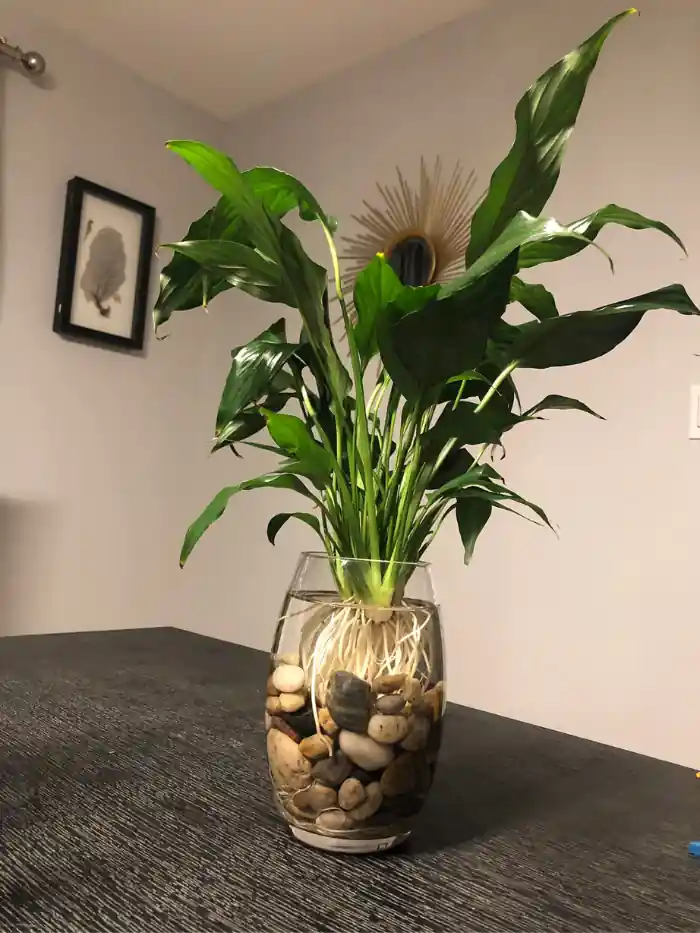
The peace lily is a great indoor plant that grows moderately in optimum conditions. The plant will attain between 1 and 6 inches of new growth yearly.
Peace lilies produce unique-looking blooms. The cream-colored spadix flower is typically enclosed by a white-colored spathe, with the spadix-spathe combination forming beautiful blooms that create a striking visual allure due to the contrast with the green foliage.
Peace lilies can grow in small spaces, as they grow no taller than 6 feet, according to the Clemson University Cooperative Extension.
They also have moderate maintenance requirements but droop and appear moody if not watered for long. I only recommend a peace lily for keen plant parents.
7. Wandering Jew (Tradescantia sp.)
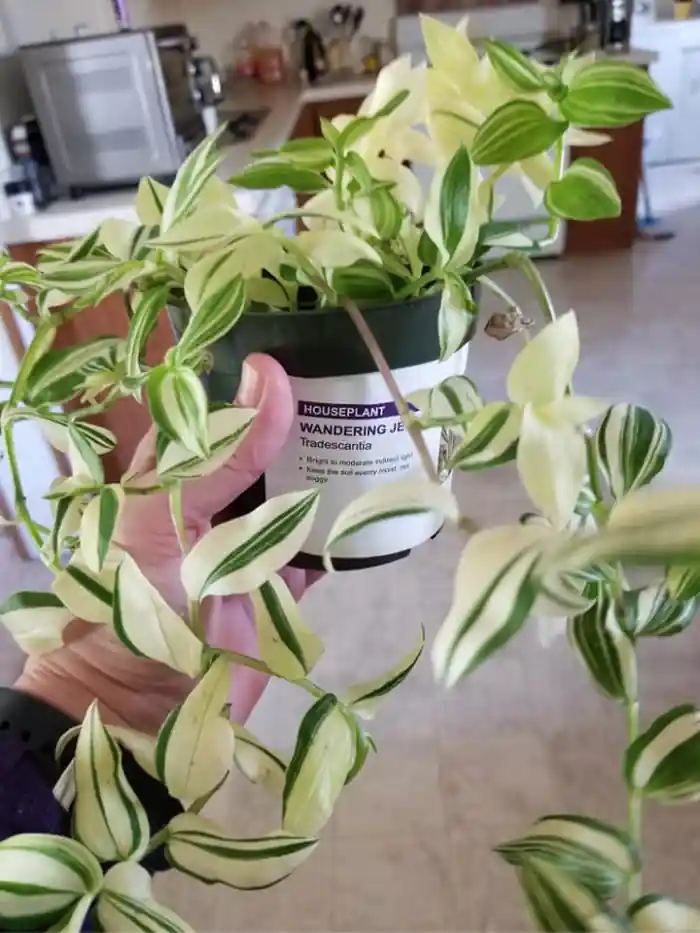
Wandering Jews are a fast-growing group of plants, as newly-planted plant cuttings will sprout new shoots in roughly over a month. Most wandering jew plants will grow as much as an inch long in 7 days during their growing season.
These vining plants are great for plantscaping because they add a lush vibe to any indoor space due to their vibrant purple foliage.
Remember that wandering Jews have higher maintenance needs than most houseplants on this list. For instance, the plants will likely become leggy when kept in low-light conditions.
Moreover, the leaf shade becomes less vibrant the less light they’re exposed to. Therefore, keep your wandering Jew in bright, indirect light and slightly moist soil for the best results.
8. Australian Tree Fern (Cyathea cooperi)
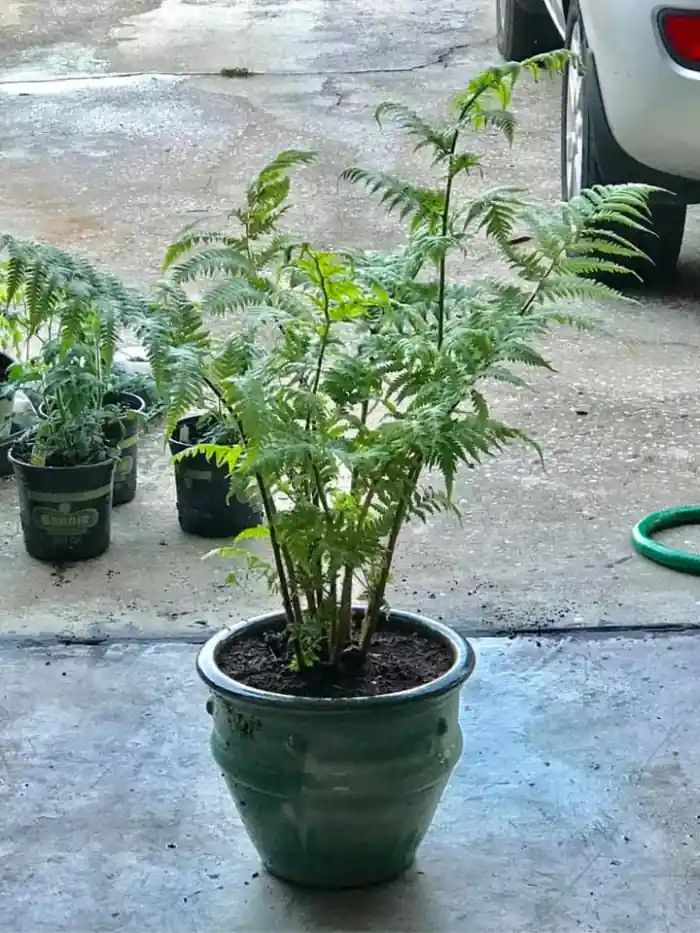
The Australian tree fern plant is a fast grower that grows to 25 feet tall indoors. Its leathery fronds can grow up to 20 feet long. Due to its incredible growth rate and size, I only recommend this houseplant for people with large indoor spaces.
Under the proper lighting conditions (bright but indirect sunlight), it will take roughly two months for the fronds of this plant to appear. Keep your Australian Tree Fern away from direct sunlight to avoid leaf burn.
9. Miniature Roses (Rosa chinensis minima)
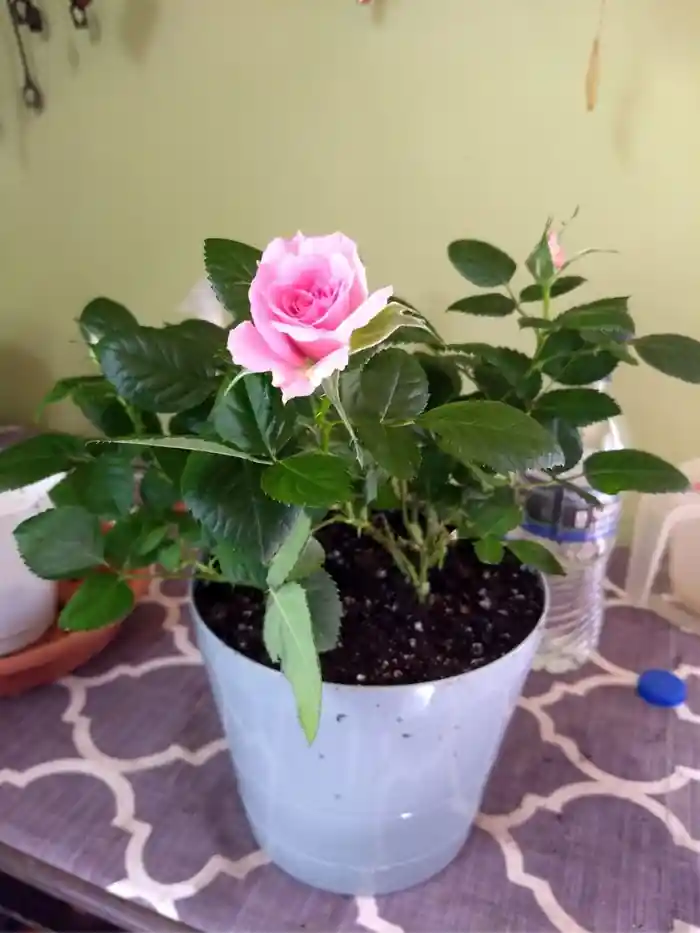
Miniature roses reach full maturity within 3 months when grown from cuttings, reaching heights of 12-18 inches. The blossoms on this plant boast pink, white, and orange traces, making it a visually alluring ornamental plant.
Since most miniature roses grow no taller than 18 inches, they’re relatively low-maintenance, as you won’t have to prune them regularly. Miniature roses have a few environmental preferences for them to thrive, such as exposure to direct sunlight, high humidity levels, and loamy soil conditions.
10. Philodendron (Philodendron hederaceum)
Philodendron is a trailing plant that can grow up to 13 feet tall. When grown from six-inch cuttings, philodendrons take 10-21 days to root.
As a houseplant, its heart-shaped leaves drape beautifully across the room, building on the interior decor.
As for plant maintenance, keeping your plants away from direct sunlight exposure will do you good, as this will trigger leaf scorching and yellowing leaves. They also prefer slightly moist soil.
Note that philodendrons grow not only fast vertically but also laterally. According to The University of New Hampshire Extension, these beautiful houseplants can grow up to 24-inches wide.
11. Autograph tree (Clusia Rosea)

The autograph plant has a growth rate of 3-4 feet per year. With its dense foliage and clinging aerial roots, lush greens will quickly cover your interiors.
Keep your autograph plants under warm conditions, as they’re cold-intolerant. Also, this fast-growing plant loves sunlight and is best grown under bright, direct sunlight. Finally, keep the soil constantly moist, as they don’t do well in dry soil.
12. Garden Cress (Lepidium sativum)
Garden cress grows at a rate of 0.5-1 inches per day under optimal conditions. When grown from seed, garden cress will sprout fast, typically within 5-15 days.
This cool-season houseplant thrives in temperatures between 60-68 degrees Fahrenheit. Being a low-maintenance shrub, it only requires adequate moisture and lighting to germinate, grow, and mature. Garden cress can also be grown hydroponically.
13. Marigolds (Tagetes)

Despite numerous medicinal uses, homeowners mostly grow marigolds indoors for decorative purposes, as the plant produces beautiful yellow/orange flowers
Most marigolds germinate within 10 days and, under optimum environmental conditions, may sprout as quickly as within five days of planting.
Care conditions for marigolds to ensure fast growth include consistent soil moisture levels and moderately high temperatures of about 70°F. Marigolds are shade-tolerant and will still germinate whether grown in bright, low-light, or moderate-light conditions.
14. Wax Plant (Hoya Carnosa)
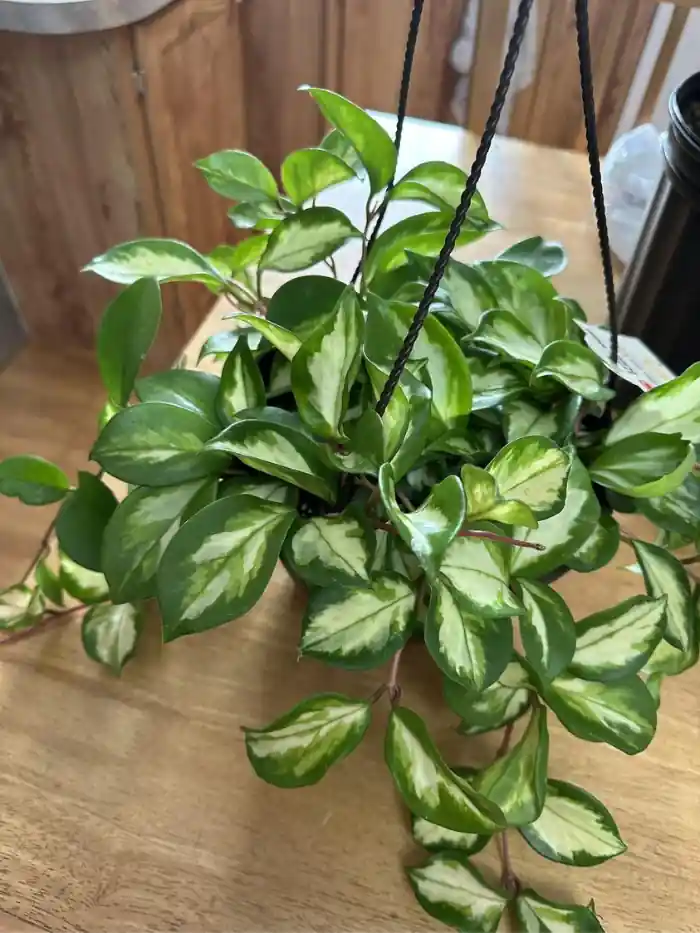
Wax plants typically start rooting within 3 weeks of planting from the plant’s flower cuttings. This hanging plant boasts lush green foliage that usually contrasts with the pink color of new shoots for an overall beautiful houseplant.
Leaf shoots also start appearing after about four weeks from planting, and it takes 5-11 months for a new wax plant to mature into a leafy adult wax plant. Maintenance requirements include high humidity levels and indirect sunlight.
How to make houseplants grow faster
To speed up the growth and development rate of your ornamental houseplants, consider the following methods:
Water them with club soda
Club soda is carbonated water rich in various macronutrients that will boost the growth rate of your indoor plants.
Different research studies have proven that houseplants regularly watered with club soda will outgrow those watered with tap water because of the same.
However, as a precaution, let your fizzy club soda go flat before applying it to your houseplants.
Apply used coffee grounds
If your indoor plants do well in acidic soil, such as miniature roses, pouring old coffee grounds on the potted soil will boost their growth rate.
Coffee is rich in various minerals that are beneficial to plants, including phosphorus, calcium, and nitrogen. You can apply coffee grounds directly to the base of your houseplants or incorporate them into the compost mix.
Applying slow-release fertilizers
If you’re working on a budget and are looking to save on the cost of commercial fertilizers, you can combine various household ingredients to make DIY fertilizer.
For instance, you can combine Epsom salt, household ammonia, and baking soda to create homemade fertilizer. Such homemade fertilizer is typically slow-release and will boost the growth rate of your houseplants without harming them.


